15 Wild Animals in Benin [Wildlife in Benin]
Want to know more about the wildlife in Benin?
Discover 15 wild animals in Benin in this post, as well as interesting facts about them. 🇧🇯
Learn All About Beninese Animals
Ready to learn all about Beninese animals?
I’ve always been fascinated by animals and by how they can be so different from one country to another. In this guide, we’ll focus on the many animals Benin has on the land, in the sky, and underwater.
I’ve split the guide into 4 categories:
- Native animals from Benin
- Endangered animals of Benin
- What is Benin national animal?
- How many animals native to Benin?
Let’s dive in right away with our first category!
Native Animals from Benin
Benin is an African country located in the western part of the continent. The vast majority of its population lives in the south coastline of the country, and it is bordered by Nigeria, Togo, Burkina Faso, and Niger. Even though its major city is Cotonou, its capital city is Porto-Novo, which has more than 264,000 inhabitants.
An interesting part of the country that I wanted to tackle is its wildlife. In light of that, I have listed the best of it, and I hope you will love learning what animals live in Benin.
Here’s the Benin animals list.
1. Cheetah

- Name: Cheetah
- Scientific name: Acinonyx jubatus
- Conservation status:
The cheetah is one of the most iconic animals of the African wilderness. It is also renowned on the entire planet for being the fastest land animal, as it can reach up to 128 km/h / 80 mph!
Compared to other wild cats, the cheetah is not very selective in habitat choice and is very flexible. Its only requirements are good visibility, availability of prey, and lesser chances of encountering bigger predators. Because yes, some animals are scarier than cheetahs in Africa.
2. Lion
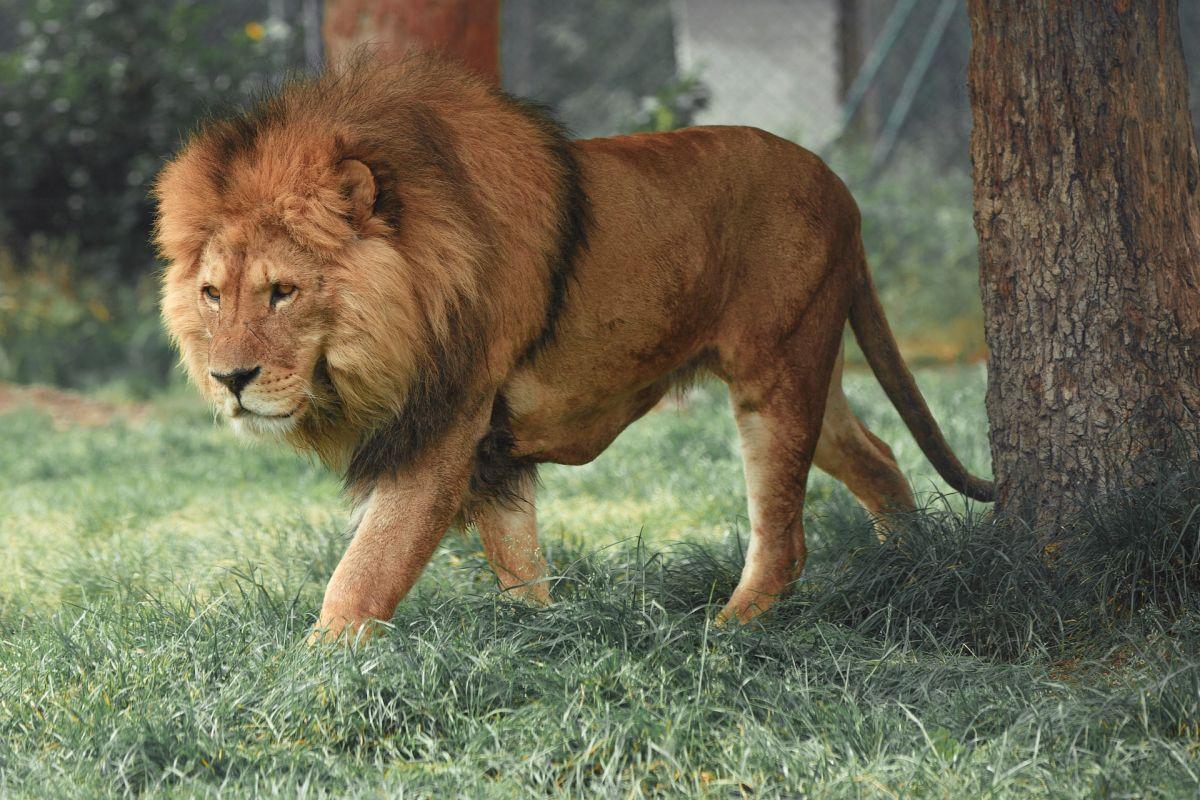
- Name: Lion
- Scientific name: Panthera leo leo
- Conservation status:
The lion is the king of the animals. It is probably the symbol of Africa, and it is present throughout most of it, and can even be found as far as the Indian subcontinent. This subspecies of lion, referred to as the northern Lion, used to inhabit southern Europe, North Africa, and West Asia, but it is now locally extinct in these regions.
The major threat lions have to cope with are humans, as they are killed for preying on livestock, sometimes even preemptively!
3. White-tailed mongoose
- Name: White-tailed mongoose
- Scientific name: Ichneumia albicauda
- Conservation status:
The white-tailed mongoose is one of the nocturnal predators of sub-Saharan Africa, and it can easily be seen in Benin. In fact, it also lives in the Middle-East, and in southern Africa.
During the day, this mongoose sleeps in cavities and burrows, and they are territorial. The home ranges of males do not overlap, but the ranges of opposite sexes largely do. Most of the time, they are solitary creatures, and they only meet each other to mate.
4. Olive baboon
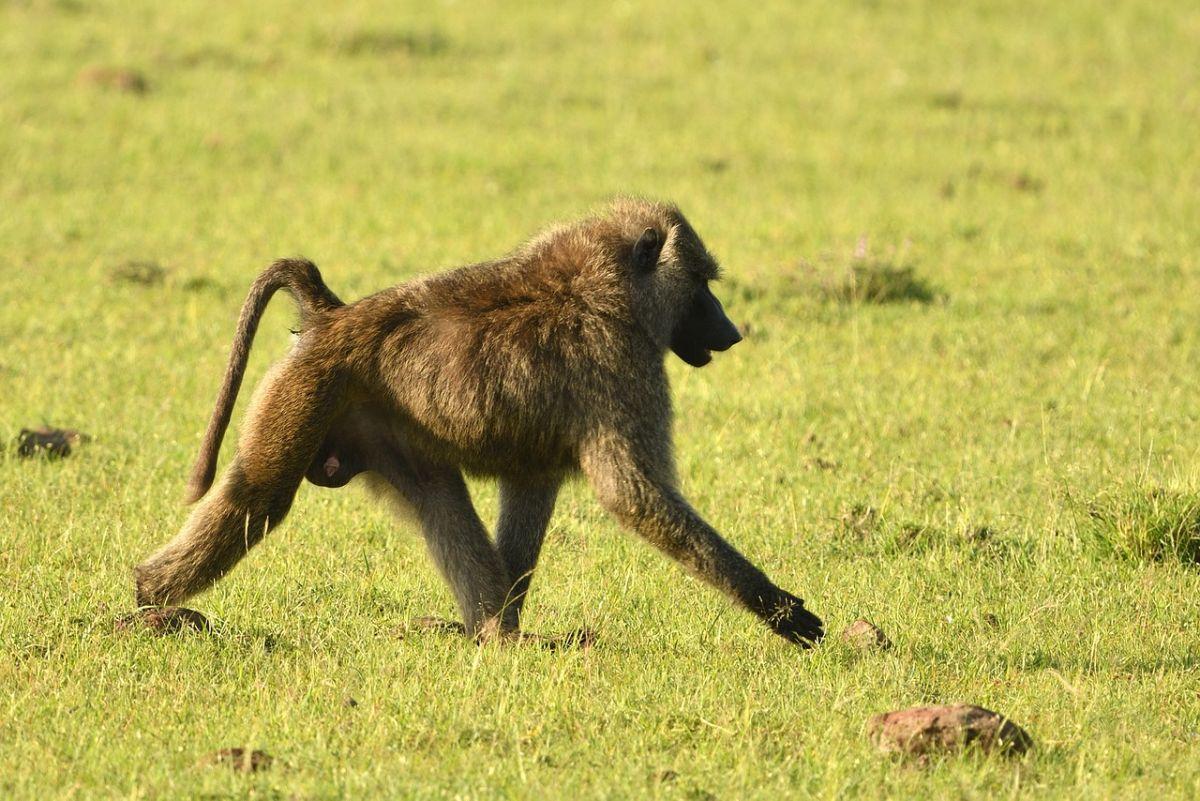
- Name: Olive baboon
- Scientific name: Papio anubis
- Conservation status:
Primates are a very important part of Africa’s wildlife, and Benin also has monkeys, including the olive baboon. It is the most widely spread species of baboon, being native to 25 African countries, and even inhabiting mountainous areas of the Sahara.
The reason for its success as a species is its diet. It is an opportunistic omnivore that can feed on anything, in any environment. Most of the time, it eats plants, invertebrates, and birds. Unlike many species, it does not look for food in a single place but will forage on the ground, climb up the trees and even swim if necessary.
5. Nile crocodile
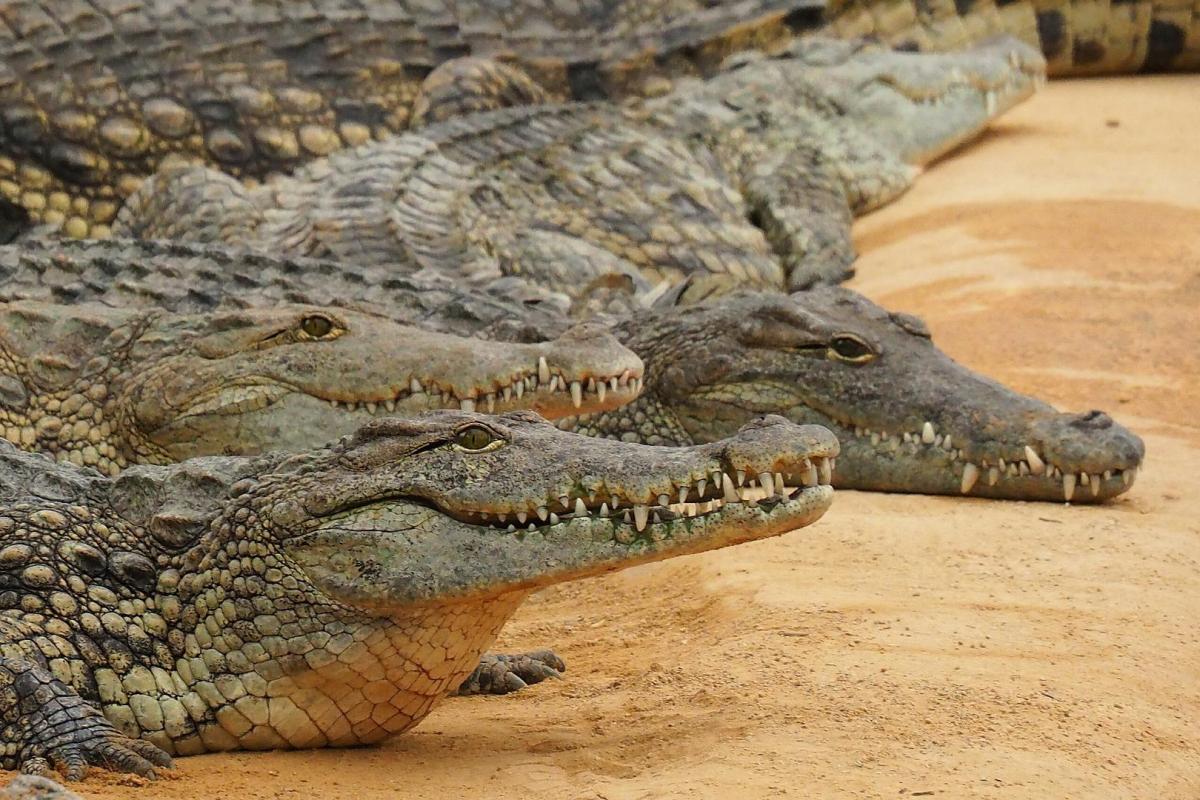
- Name: Nile crocodile
- Scientific name: Crocodylus niloticus
- Conservation status:
Despite their name, Nile crocodiles are present throughout the vast majority of sub-Saharan Africa, in an estimated 26 countries. It lives in aquatic areas like swamps, rivers, marshlands, and lakes, and usually prefers freshwater, even though it has already been seen in deltas.
It is the second-largest living reptile in the world after the saltwater crocodile, and it is an aggressive apex predator. It will prey on anything it can within its range, even though it usually feeds on fish, mammals, and reptiles. The Nile crocodile is famous for being an ambush predator that can wait for weeks for its prey!
6. Leopard tortoise
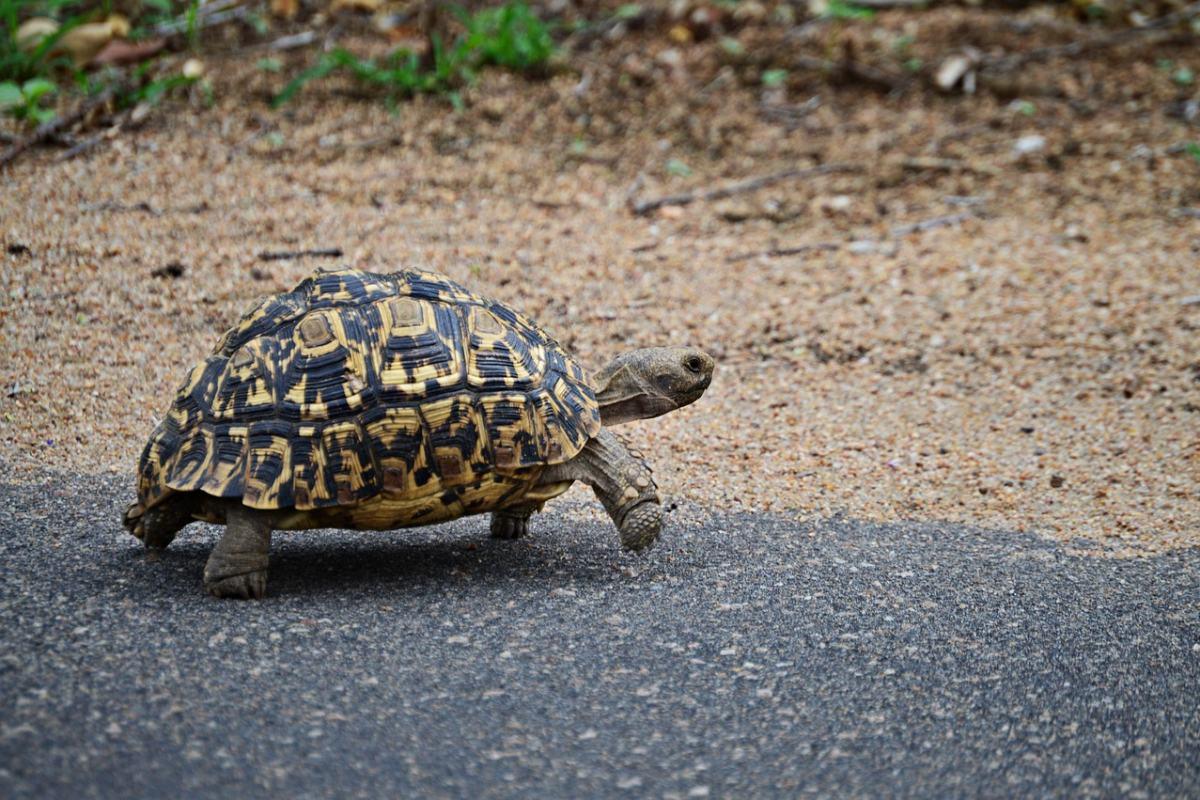
- Name: Leopard tortoise
- Scientific name: Stigmochelys pardalis
- Conservation status:
The leopard tortoise is a large species of tortoise that inhabits East Africa and South Africa’s savannas. It lives in abandoned holes made by other animals such as aardvarks, jackals, and foxes. It never digs, except when it comes to laying eggs.
The diet of the leopard tortoise is majorly made of plants like thistles, grasses, and succulents. As a matter of fact, this animal is not sexually mature until 12 or 15 years, and it can live up to 100 years!
7. Black crowned crane
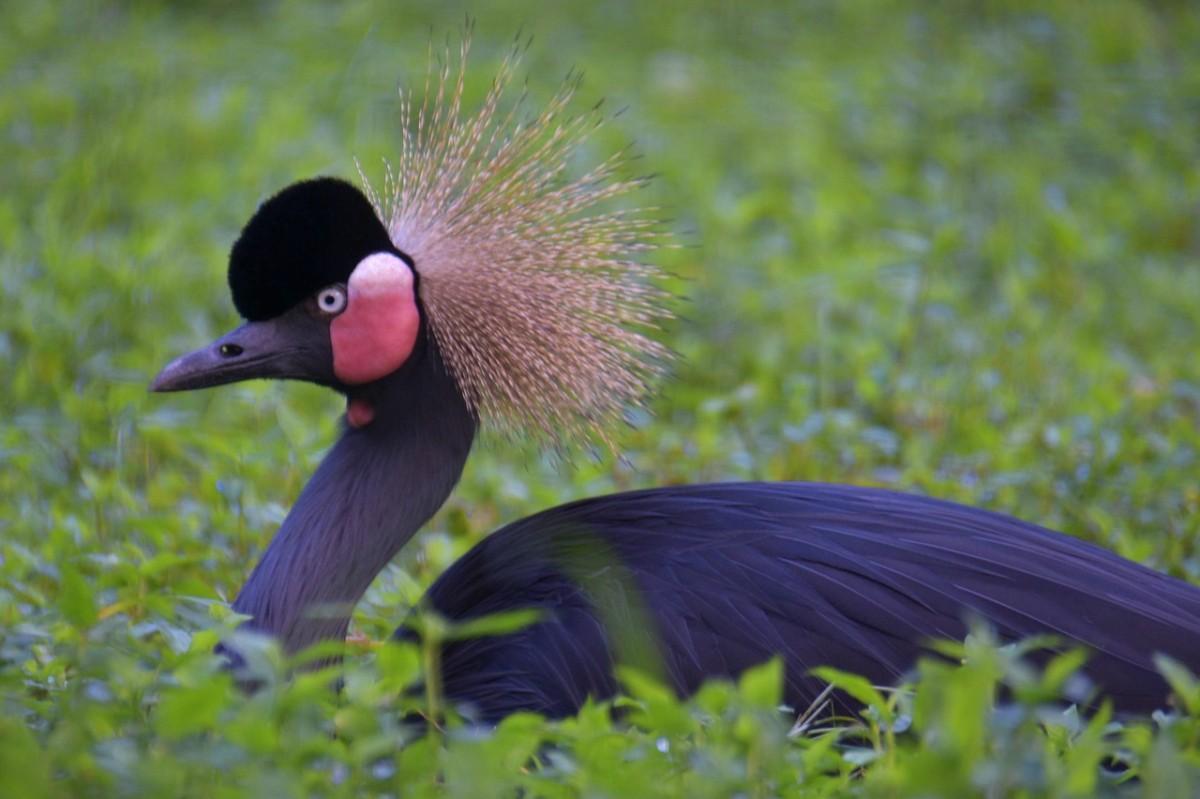
- Name: Black crowned crane
- Scientific name: Balearica pavonina
- Conservation status:
The black-crowned crane is a species of bird famous for its golden crown. Most of the time, it can be found in the wetlands of sub-Saharan Africa during the wet season. Occasionally, it can also be seen in dry savanna.
Culturally, the black crowned crane is considered a symbol of peace, and it is the national bird of Nigeria. Its estimated global population is 28,000 to 47,000, and it is threatened by wetlands degradation, where it feeds and breeds.
8. Tsetse fly
- Name: Tsetse fly
- Scientific name: Glossina morsitans
- Conservation status:
The tsetse fly, also known as the tzetze or the tik-tik fly, is a large and biting species of fly. It is one of the major factors of disease transmission in all of Africa and has therefore been intensely studied.
Over the course of the centuries, it has had a considerable impact on sub-Saharan Africa’s economy, due to its infamous sleeping sickness. It also prevents mixed farming and is a major reason for poverty within its range.
9. African buffalo
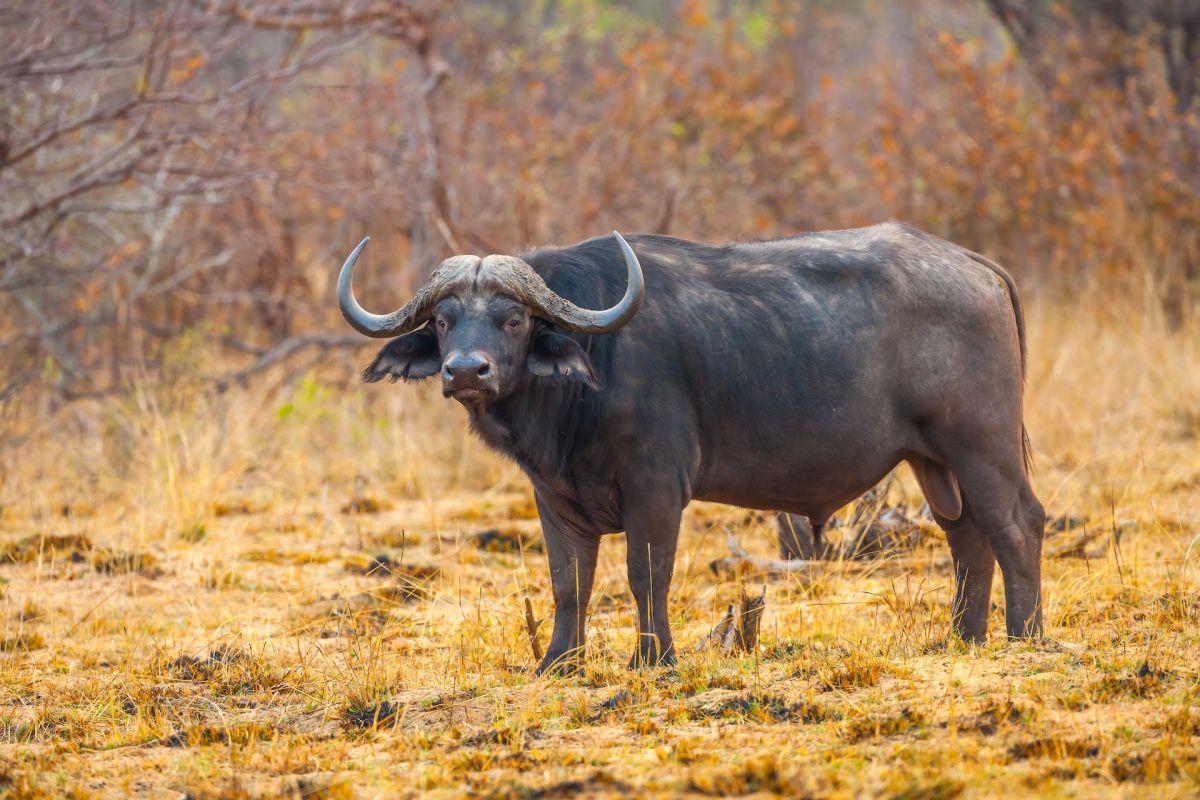
- Name: African buffalo
- Scientific name: Syncerus caffer brachyceros
- Conservation status:
Despite its look, the African buffalo is not an ancestor of domestic cattle and is in fact distantly related to other bovines. Believe it or not, it is one of the most dangerous animals on the entire African continent, goring and killing more than 200 people every year! With such unpredictable behavior, it is not very surprising it was not domesticated.
African buffalos always live in herds with a linear dominance hierarchy.
10. Sitatunga
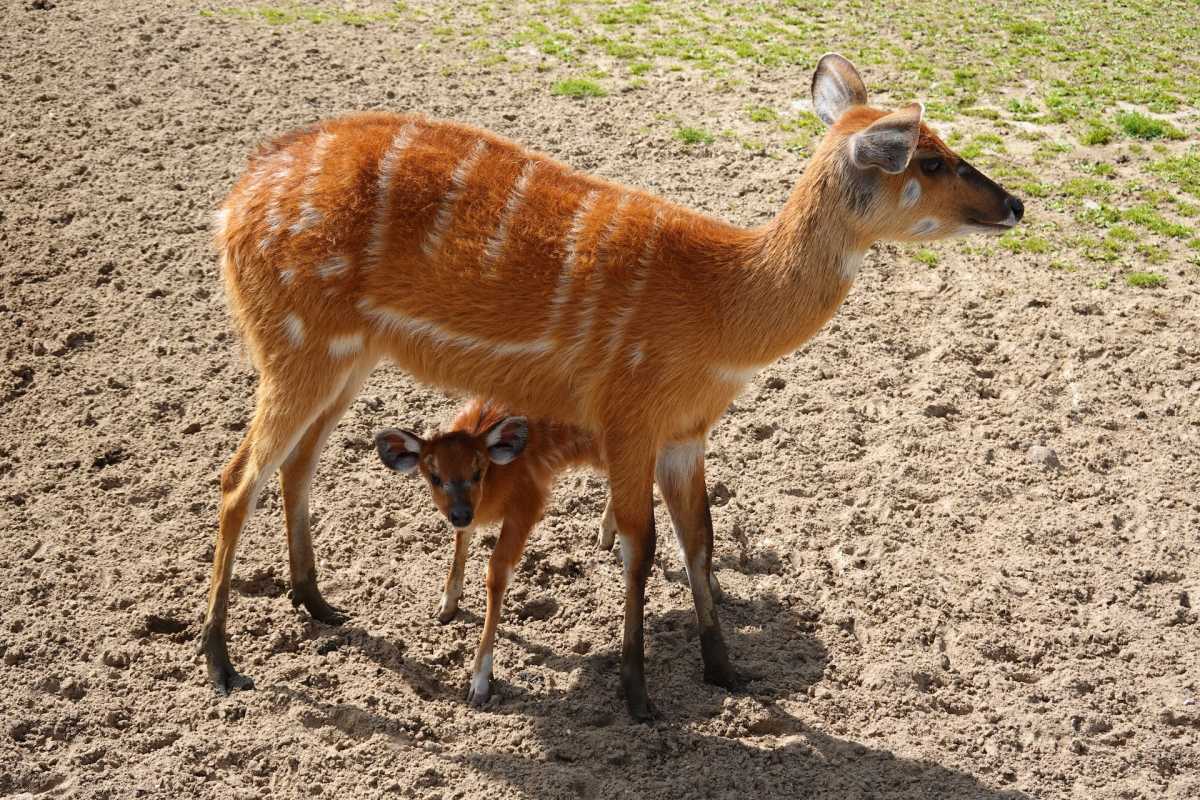
- Name:Sitatunga
- Scientific name: Tragelaphus spekii
- Conservation status:
The sitatunga, also called the marshbuck, is a species of antelope that can be found throughout central Africa, and that inhabits swamps. Male sitatungas are very different from females, and they are much larger. Their fur is a variant of red and brown, while their female counterparts are chestnut-colored.
They are active during the early hours of the day and the last couple of hours before dusk, and also at night. During all this time, they mostly feed. They are extensively hunted in countries like Senegal and are also severely threatened by habitat degradation.
11. Common patas monkey
- Name: Common patas monkey
- Scientific name: Erythrocebus patas
- Conservation status:
The common patas monkey, also known as the hussar monkey or the wadi monkey, is a terrestrial species of monkey that inhabits semi-arid areas of Central and West Africa. It has even been introduced to Puerto Rico.
This monkey lives in groups of up to 60 individuals, with only one adult male! Other males join the group during the breeding season. There are also all-male groups for juvenile monkeys who leave the group they were born in.
12. Red-headed rock agama
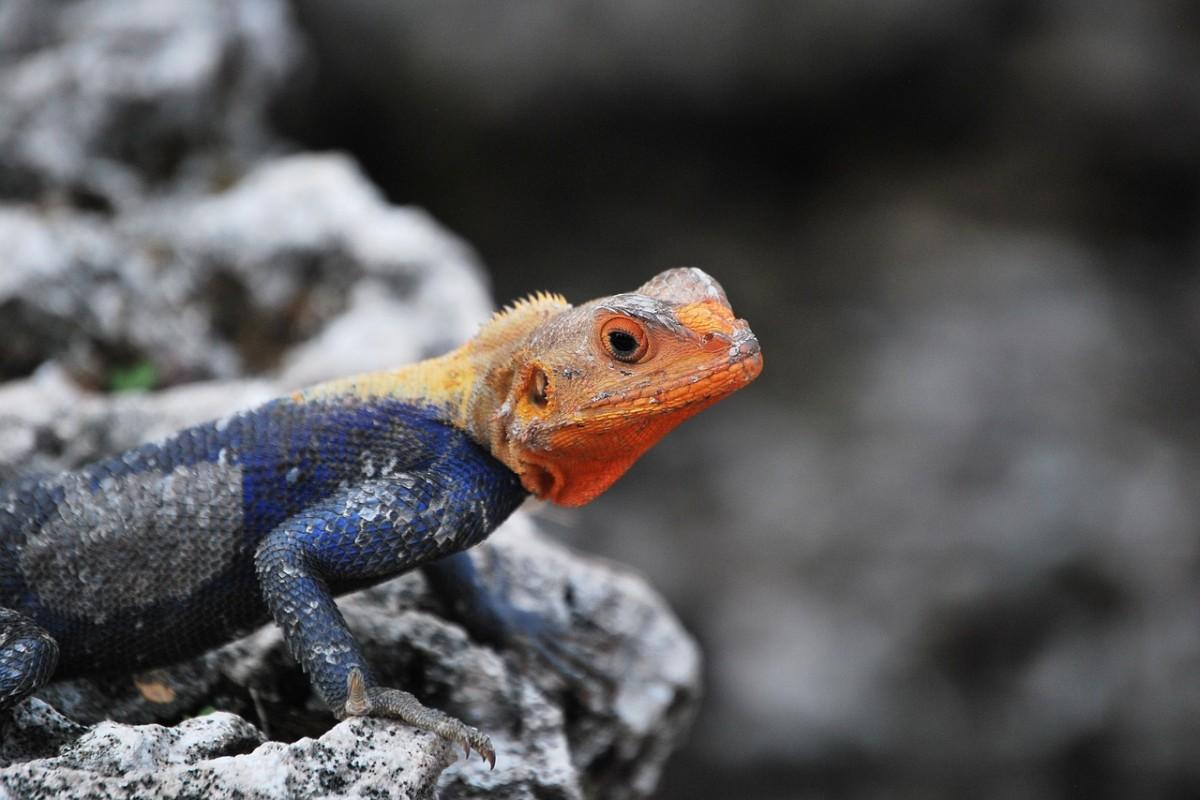
- Name: Red-headed rock agama
- Scientific name: Agama agama
- Conservation status:
The common agama, rainbow agama, or red-headed rock agama, is a colorful species of lizard native to most of sub-Saharan Africa. Its size ranges from 13 to 30 cm / 5.1 to 11.8 in, and males are much longer than females.
Their diet is mostly made of insects, but they have already been seen eating small mammals, vegetation, and other reptiles. Red-headed rock agamas are very territorial, and males fight each other for control of the area.
13. Hippopotamus
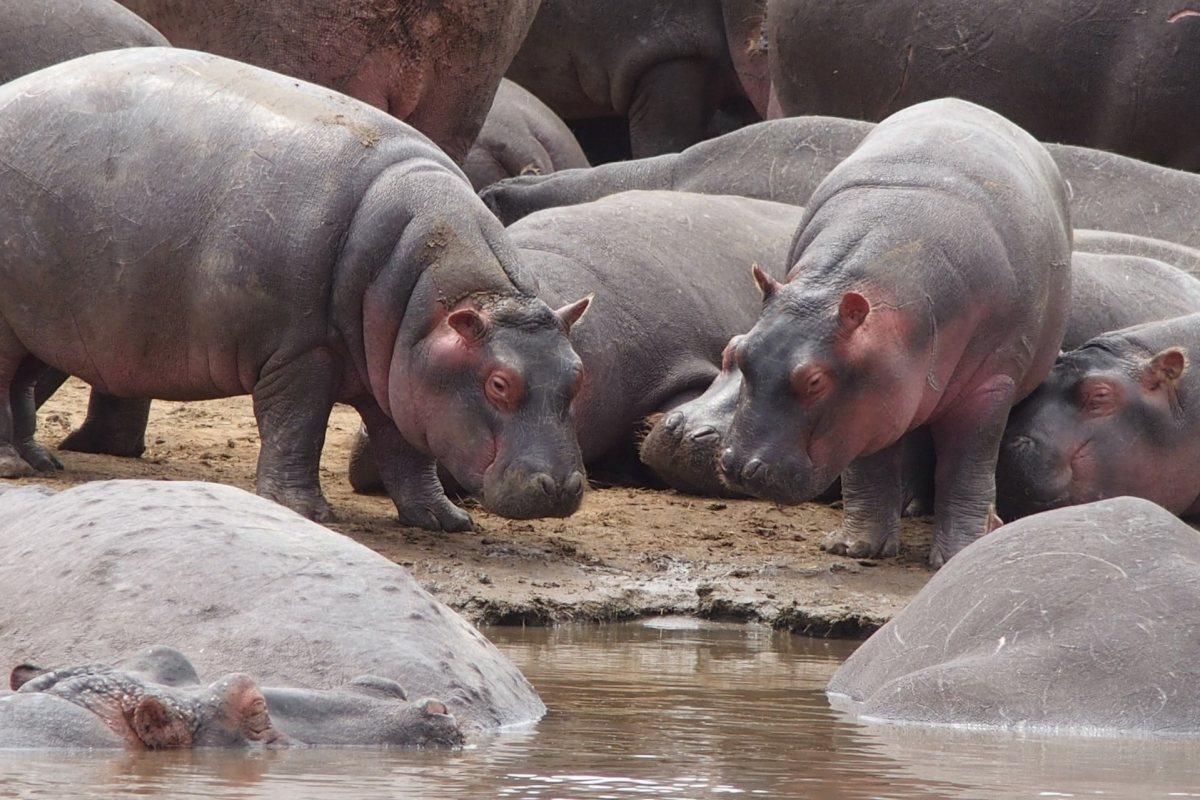
- Name: Hippopotamus
- Scientific name: Hippopotamus amphibius
- Conservation status:
The hippopotamus is one of the largest land mammals on the planet, and it is herbivorous, semi-aquatic, and native to sub-Saharan Africa. It inhabits lakes, mangrove swamps, and rivers, and territorial males rule groups of up to 30 females and young individuals.
Don’t be fooled by its innocent look, it is in fact one of the most dangerous animals on the planet, with a very aggressive and highly unpredictable nature. Sadly, it is seriously threatened by poaching for its meat and ivory teeth and habitat loss.
14. Caracal
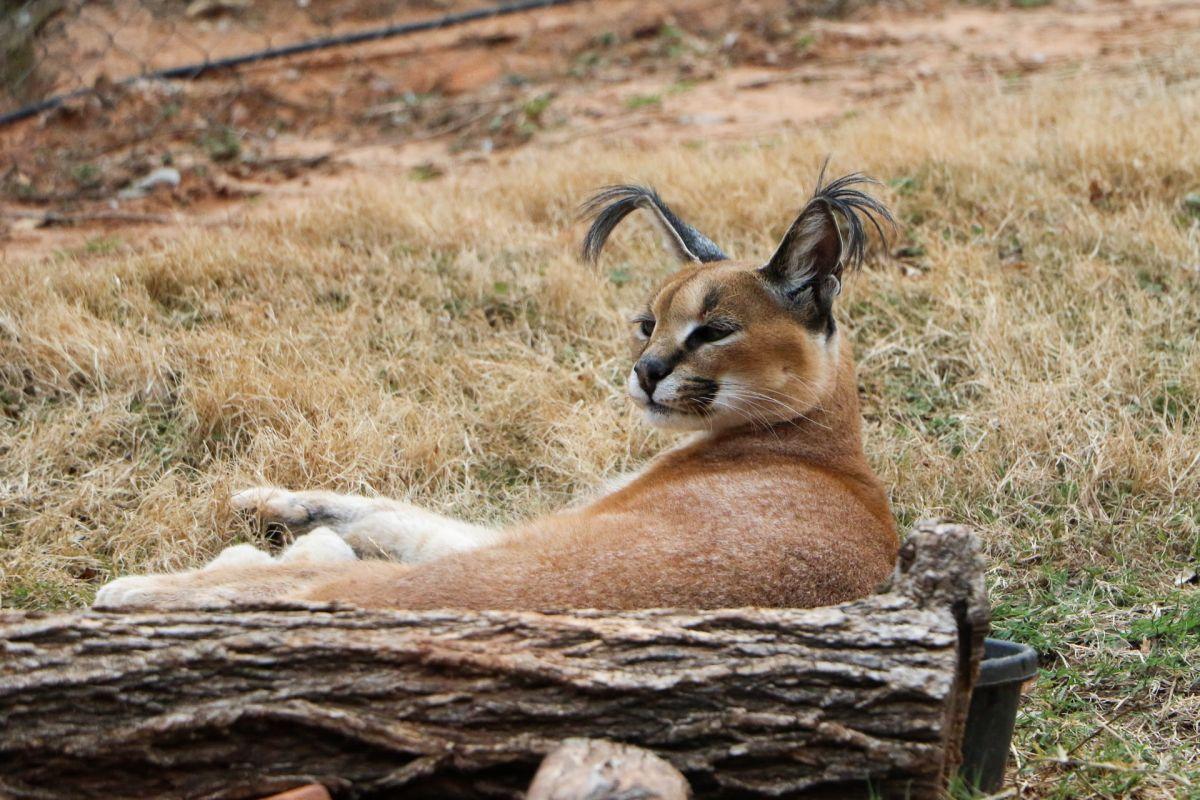
- Name: Caracal
- Scientific name: Caracal caracal
- Conservation status:
The caracal is a medium-sized species of wild cat native to Africa, Central Asia, the Indian subcontinent, and the Middle East. It has a reddish or sandy coat and is a nocturnal animal. Being very elusive, it is really hard to spot one in the wild.
The caracal feeds on small mammals, rodents, and birds, and can catch birds in midair by leaping higher than 4 m / 12 ft! Some individuals were tamed and used for coursing in countries like Egypt, Persia, and India.
15. African civet
- Name: African civet
- Scientific name: Civettictis civetta
- Conservation status:
You might have never heard of it, as it is not a widely-known animal. The African civet is a large mammal that inhabits forests and woodlands. Even though it is considered of least concern, it is threatened by hunting and capturing to produce civetone for the perfume industry.
During the day, the African civet sleeps in dense vegetation. At sunset, it wakes up and feeds on rodents, eggs, berries, and fruits. The fur of this solitary mammal is easily recognizable, being black and white spotted.
—
So there you have them, these were my 15 wild animals in Benin. I hope you enjoyed this list and that you learned something new today.
In case you want to learn more about Benin wildlife, feel free to keep reading, as I still have lots of things to tell you about:
Endangered Animals of Benin
This is definitely the saddest part of the list, but it is very important to raise awareness. Because of this, let’s go through the list of endangered animals in Benin.
Here are the animals in danger of extinction in Benin.
- African hunting dog
- Slender-snouted crocodile
- White-backed vulture
- Home’s hinge-back tortoise
- Black rhino
- African forest elephant
- and 25 more…
- African spurred tortoise
- Chimpanzee
- Lappet-faced vulture
- Secretarybird
- Grey parrot
- and 37 more…
To see the full list of endangered species in Benin, head over to the International Union for Conservation of Nature’s Red List.
What is the National Animal of Benin?
The national animal of Benin is the African leopard.
The African leopard represents might, victory and pride, just like any of the biggest wild cats. It is featured in Benin’s coat of arms, and it has always been an important species in the local Yoruba culture.
Even though it is this reputed, it is sadly threatened by human persecution and habitat conversion. It has also always been hunted for its fur, and as a trophy.
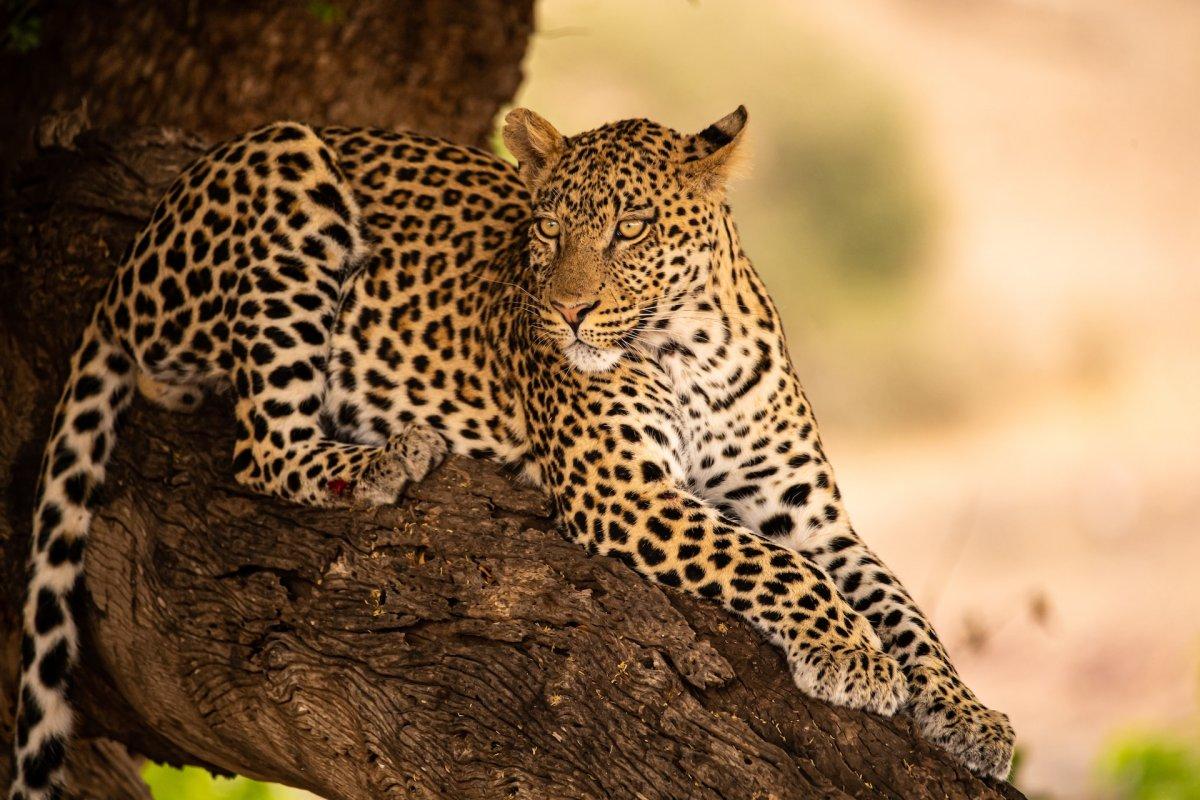
How Many Animals Native to Benin?
What is the diversity of native animals in Benin?
Let’s look at the total number of species of Chordata (mammals, birds, fishes, and reptiles).
Total number of animal species in Benin: 1,926 (14,098 in total in Sub-Saharan Africa)
More About Animals in the World!
Loved these Benin animal facts? Want to see what animals live in other countries?
Then check out these posts:
Or click here to see ALL the facts up on the blog! Spoiler alert: there’s A LOT of them.
Share the knowledge! Click on the buttons below to share information about these famous animals in Benin with your friends, and help them learn more about the world 🙂
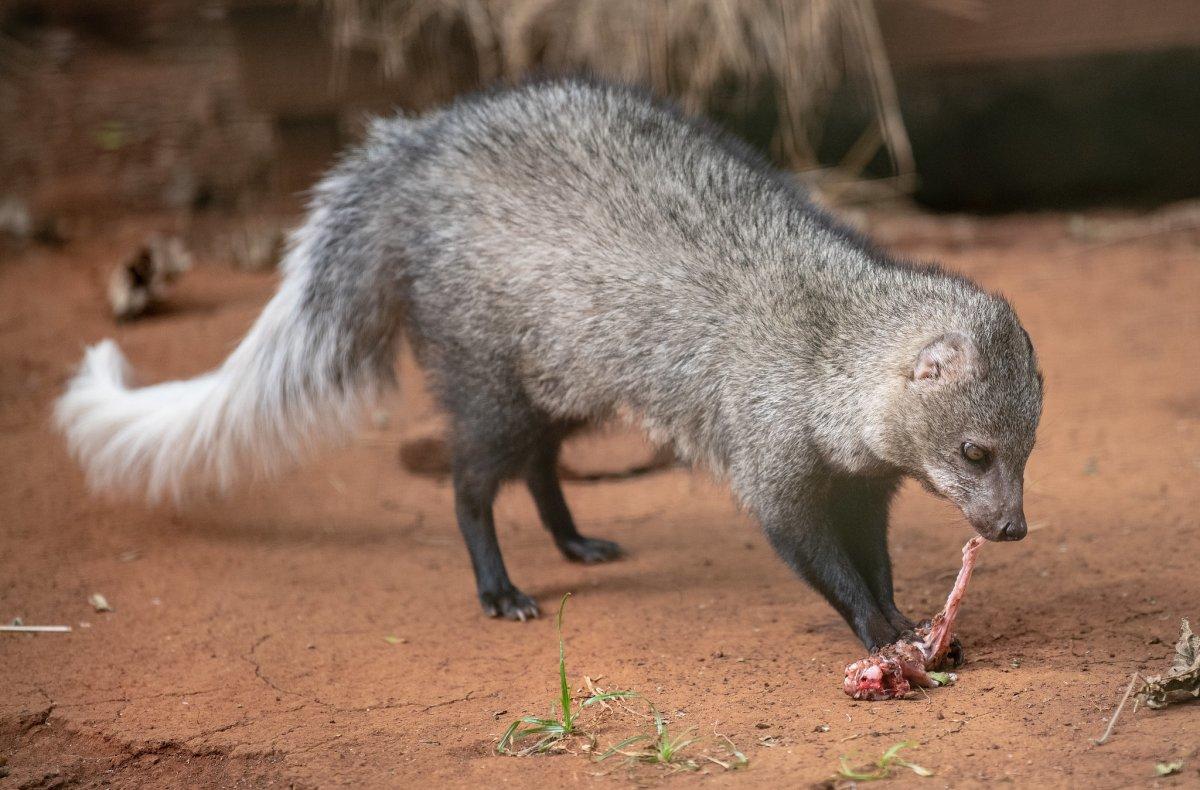
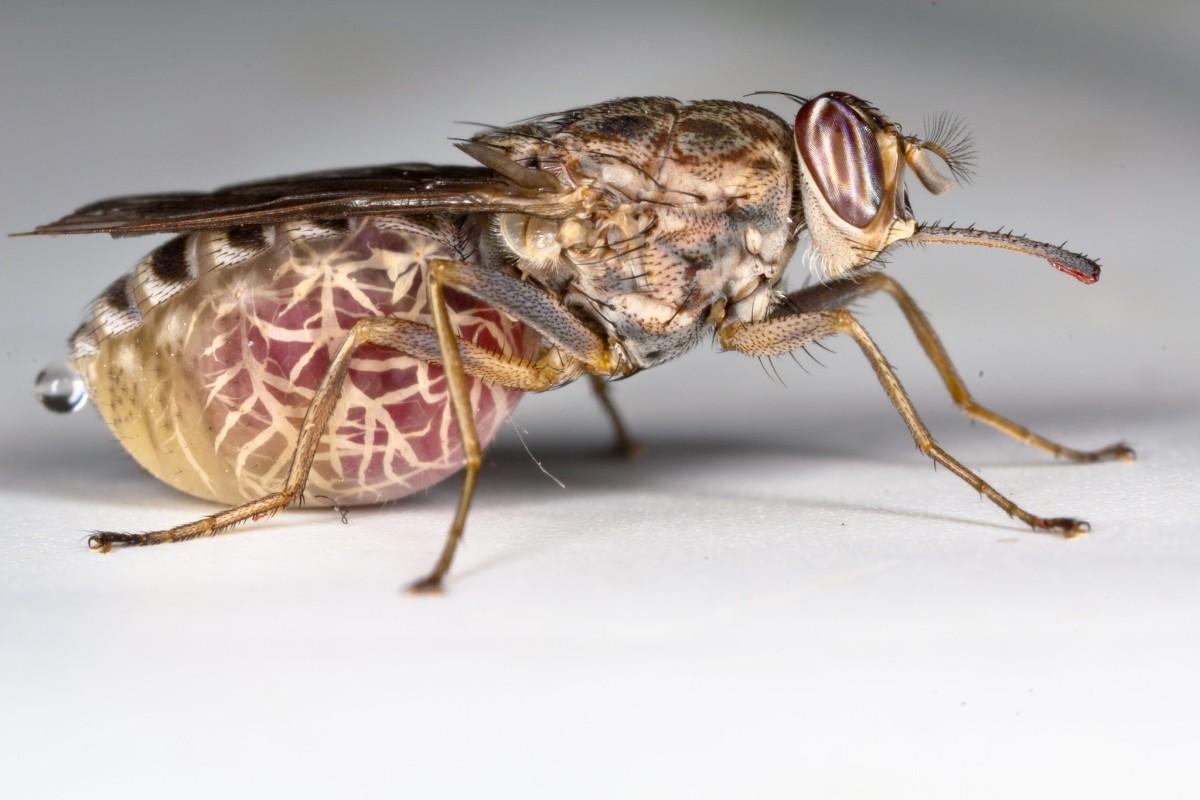
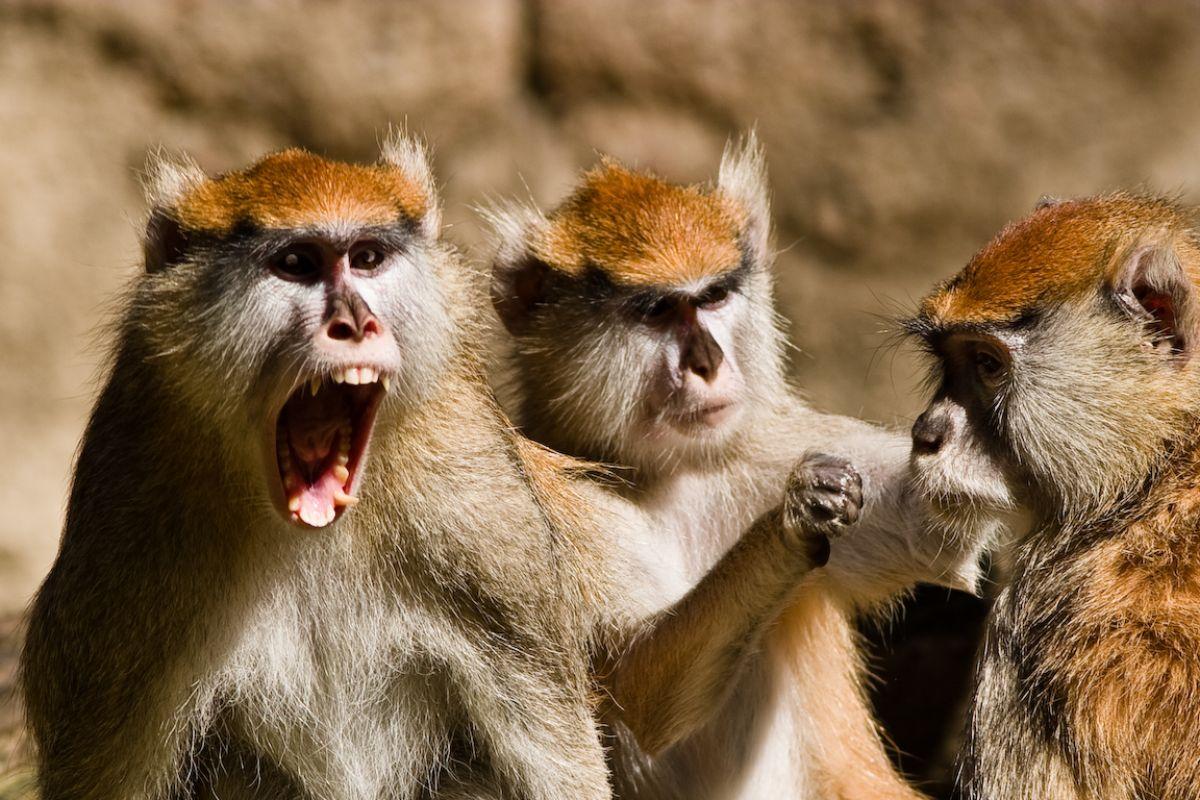
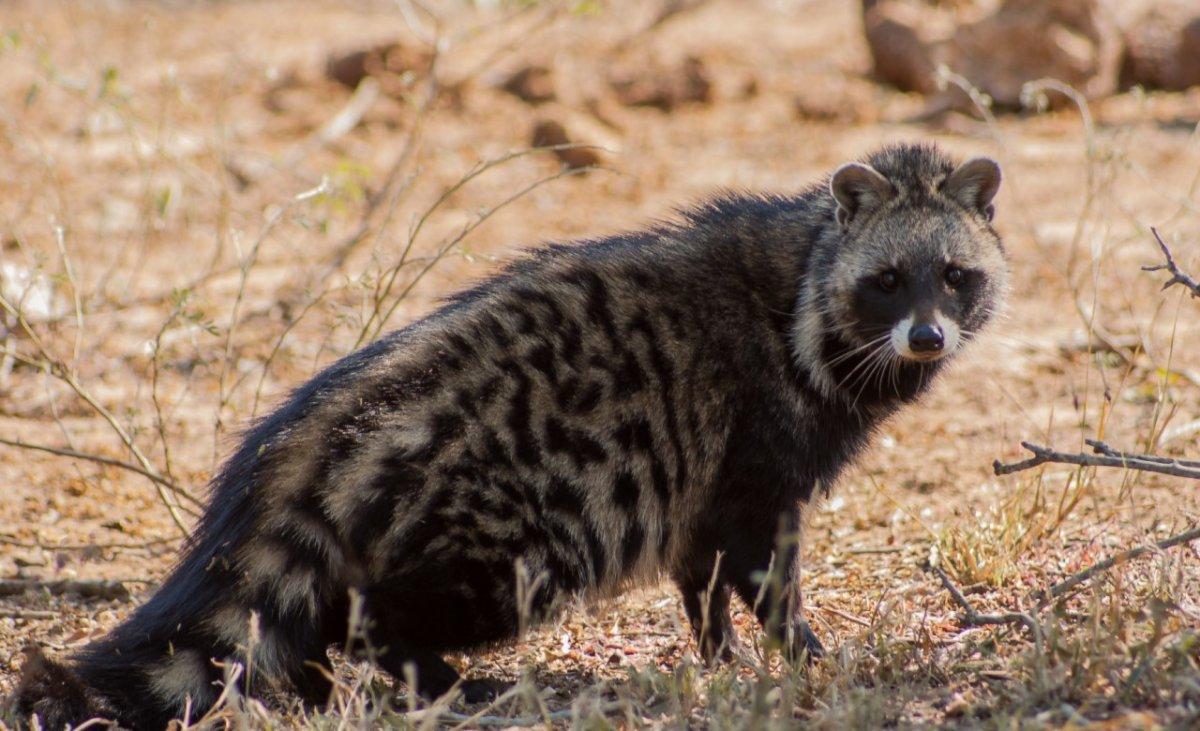

![16 Wild Animals in Ethiopia [Wildlife in Ethiopia]](https://www.kevmrc.com/wp-content/uploads/2022/12/16-wild-animals-in-ethiopia.jpg)
![30 Wild Animals in Saudi Arabia [Wildlife in Saudi Arabia]](https://www.kevmrc.com/wp-content/uploads/2022/08/30-wild-animals-in-saudi-arabia.jpg)
![21 Wild Animals in Switzerland [Wildlife in Switzerland]](https://www.kevmrc.com/wp-content/uploads/2022/11/21-wild-animals-in-switzerland.jpg)